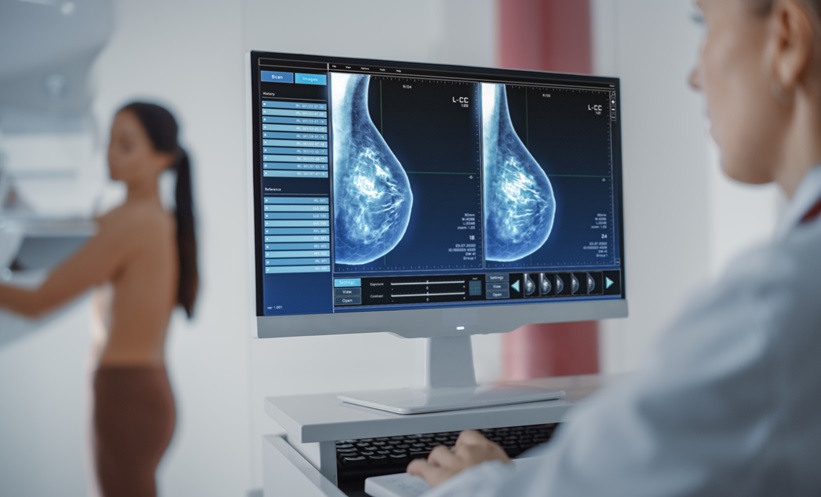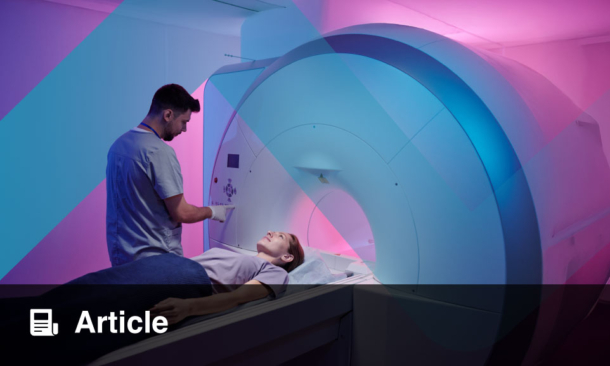James Roberts | CEO and Co-Founder, mOm Incubators Ltd., Nottingham, UK.
Citation: EMJ Innov. 2026; https://doi.org/10.33590/emjinnov/OLYJ1019
![]()
As the inventor of the mOm Essential Incubator (Nottingham, UK), can you explain how it compares to traditional incubators in terms of functionality, portability, and cost-effectiveness?
Conventional incubators haven’t changed for a long time; it’s been the same basic idea since the 1980s. A lot of people can recognise them. They usually look like spaceships in the neonatal ICU (NICU), and they’re really heavy, at approximately 150 kg. They can look quite scary, and it’s important to consider the parent, who is really the one going through all of this. Their child is born, and there’s an issue they might not fully understand. Then they go to the NICU and see this scary-looking piece of equipment, which might worry them more. With the mOm Incubator, the feedback we’re getting is that it’s very approachable, parents feel comfortable and safe with it.
Traditional incubators can also be complicated to use, clean, store, and maintain. They’ve been thought of as very static devices that have only one place. What we’ve done is broken it down into its fundamental elements and built it back up with clinicians in the NHS and globally to create a new device that fits their needs. There are about 20 kg, and compared to conventional systems, you can take them anywhere. They’re also incredibly easy to maintain and clean. They give clinicians everything they need to care for babies in our patient population in a very simple way. The one request that emerged when interviewing clinicians over the years was that they wanted something that did what was necessary for their patient, but also simple to use. We made all the smart stuff completely automatic so that nearly anyone can use it. It means we can take the incubators to places where traditional systems can’t go, and we can deliver them anywhere around the world where they’re needed. It’s a very robust system as well. Ultimately, clinicians are trying to deliver the best patient care and experience possible, and we hopefully allow them to do that.
You came up with this idea as a final-year design student at Loughborough University, so did you have a prior interest in healthcare and medical technology (medtech)?
Regarding medtech, I’ve always been interested in design engineering since I was a child. It was always ‘my thing’ at school, and I got pushed to pursue it by some really good teachers, so in that sense, I was lucky. I was also interested in biology, so throughout school, it was always design, engineering, math, biology, and physics that held my focus. I had the choice at university to study biomedical sciences, design engineering, or product design, and I ultimately chose product design because it is my first love; I grew up playing with cars, motorbikes, and those kinds of things.
However, I’ve always had a huge interest in healthcare for a few reasons. I once met a man called Michael Tuke, who is now a fellow at the Royal Academy of Engineering, London, UK, when I was about 10. I talked to him about his work, and he specialises in orthopaedic implants, which I found fascinating. He had made equipment that allowed someone to regain mobility. Not only that, but his passion for it was intoxicating. I love that about medtech, and about Pharma as well. They are some of the only industries where your work can directly impact people in a positive way.
One of the biggest moments for me when building these incubators with the team was when the first baby was placed inside. It was a really magical moment for everybody, especially because it takes around 5–6 years to develop something, and then it suddenly goes from being an idea on paper to being used for a patient.
In terms of the idea itself, in my final year of university, we were given a brief to ‘design something that solves a problem’. I was lucky enough to see a documentary on TV that included a 5-minute segment exploring the lack of incubators and how that impacts infant mortality. On average, 10% of babies are born preterm, and for every 1 °C drop in a child’s body temperature, their risk of mortality increases by 28%. Therefore, small changes can make a massive difference. That’s what I chose to focus on. My mum found it strange because she was born preterm in the 1960s, and she showed me a picture of her in one of the very first incubators in London. From then on, it became a bit personal, which changed the game a little bit.
I remember talking to one of my tutors at the time, and they asked if I was sure I wanted to go into medtech since it’s a bit boring. That surprised me, because from my point of view, medtech is ultimately improving and saving lives, which is incredibly exciting. We should celebrate medtech and its capabilities more and encourage more people to enter the field.
Recent clinical trials have shown promising results for the mOm Incubator. How do you envision these findings influencing its adoption in various healthcare settings?
We had a multi-site, randomised clinical trial based in several locations across the UK, including Glasgow, Norwich, and St Peter’s, and it was set up by someone in our team. The results showed that we are on par with any other incubator for babies, and that we’re much easier to clean, store, and maintain. This means that you can trust our system to be as good as any of the other traditional systems while being available in a much more flexible package that can go anywhere. Thus, in terms of adoption into healthcare settings, there’s now trust that the mOm Incubator does work, and that’s what we’ve built our different value propositions on.
We have pilot studies ongoing in several sites around the UK at the moment, and they’re going very well. This is important because clinicians need to be able to trust that the device is both beneficial and does no harm.
Can you tell us about mOm Incubators’ ongoing initiatives to support newborn care in Ukraine, and other global settings? How do these efforts align with global health equity goals?
We were contacted by clinicians facing a unique problem. When air raid sirens went off, nurses in Ukraine had two choices: stay with the babies in the NICU or maternity ward and risk injury, or go into air raid bunkers, taking the babies out of their incubators. Unfortunately, in the latter case, the infants became dangerously cold and passed away. Ours was the only system that worked; the nurses could use the incubators in the NICU, and when they needed to take them into an air raid bunker, the incubators could still function effectively. It’s really flexible, and the devices are built to be robust. They aren’t limited to wartime use; the incubators can go back into the healthcare system and be used as normal.
Traditionally, incubators are only seen as devices used in the NICU. Babies are born in the maternity ward, and if there’s a problem, you go up to the NICU. When you’re coming out of there, you enter transitional care, or you’re discharged. Maternity and transitional wards are places where they haven’t been able to use these types of devices before. What we’re doing is stopping unnecessary transfers to the NICU by using our incubators in these other wards, which keeps babies close to their parents to promote bonding. Our system can even be put over a parent’s bed. Ultimately, it reduces a lot of stress and friction in the system.
Several pilot studies have shown that we’re reducing costs and easing the burden on the NHS while increasing patient benefits and promoting the bonding between parents and infants. They’re also using the incubators during hospital transfers, phototherapy, and in other interesting ways. The mOm Incubator truly gives clinicians the flexibility to care for their patients the way they want to, in the NHS and elsewhere.
What were the most significant regulatory, clinical, and logistical challenges you encountered during the process of bringing the mOm Incubator from concept to clinical use?
Companies, especially in the medical field, change quite a lot when going from a development phase to a commercial one. This is usually because the development phase is much longer due to the requirements, the type of experience needed, and the changes that occur once the company reaches the commercial phase. In the development phase, there are several challenges. Incubators may seem simple on paper, but in reality, they are a complicated mix of mechanical, electronic, and human factors. At the end of the process, because the patient is a baby, you’re ultimately using the system on someone who can’t give consent, which means there are added requirements to ensure that the device is completely safe.
For example, we had to go through nearly a year’s worth of testing to make sure our device did no harm. Our clinical trials, despite the name, were not actually trialling whether the device works or not. We already knew that, and we knew that we had to take all the risks out of the device from the very beginning. The trials were more focused on how the devices are being used effectively. Our Director of Clinical Affairs ensured that we did everything by the book and that our ethical approvals were done properly.
An incubator is governed by an incredibly strict standard, which is different from other medical devices. It’s similar to a gamma knife. You know how much gamma radiation is needed, and if you supply too much, you’re going to harm someone. Incubators are the same. You know what temperature range you need in an incubator for a child to thrive and what the gradients of air temperature throughout the system need to be. There is a lot of testing involved, including electrical safety testing, electromagnetic compatibility testing, and mechanical testing. Huge metal balls were swung into it from a massive height, which was upsetting when we saw it the first time, especially since we’d spent a long time building this system. However, it’s a necessary process to test the safety around the device itself and how it interacts with the environment. There are only a few places in the world that can test incubators to such a high standard. I think that our technical file for regulatory approval is probably six or seven times longer than ‘War and Peace’; it’s a lot of data that’s taken a long time to build.
In terms of logistical challenges, getting the devices to where you need them to be for the very first time can be fun, but the supply chain and how we’re building these systems can be the source of some issues. We were developing some parts during the COVID-19 pandemic, and it seemed as though every week there was another complication, whether it was with a certain type of chip or piece of plastic, or even packaging. Devices have to go through specific packaging testing to ensure that the integrity of the device is maintained after it’s been shipped. It’s a process of figuring out how to overcome each obstacle. It was fun at the time, and it’s made the device very robust, as well as flexible with our supply chain.
Based on your experience, what advice would you offer to aspiring medical technology innovators navigating the healthcare sector? What about healthcare professionals looking to translate clinical insights into tangible innovations?
For aspiring medtech innovators, people tend to obsess over solutions or ideas, but I think you need to become obsessed with the problem, and if you do, the solution will emerge. For example, the system here is very different from the one that I showed originally, and I was lucky to win some awards for it. That came from clinical insight and learning more about the problem, which then shaped the solution. This happened gradually, so that’s the main bit of advice I would give.
The second thing I’d say is that medtech is quite different from a lot of other industries. If you develop a quick prototype, get it onto the market, and it doesn’t sell well, then it can cost millions. You need to know what the clinical pathways are, how your potential products can be sold, and other similar factors before you can bring the system to market.
The third piece of advice I have for innovators is to try working in the industry for at least a year. That’s something I wish I did. It’s an old industry that has been built up over centuries, so there’s a massive amount of knowledge that you have to learn very quickly. The learning curve is steep, and having people around you who have this knowledge is incredibly valuable because they’ll be able to help you anticipate obstacles.
Now for healthcare professionals looking to translate clinical insights into innovations, I would say think about the team or the people you want to bring this to market, and really try to figure out what skill set is needed to be able to do that. If a clinician has an idea for an amazing product, we need to think about what is necessary to bring it to fruition. You might need someone to raise money for the company, you might need operators or developers, and you might need people who can run clinical trials; these are all essential for creating a product.
I think clinicians can be afraid of interacting with companies, particularly in the UK. They can be a little standoffish, as medical device companies haven’t always acted in the best possible way. However, for products to come to market and help in clinical practice, collaboration is essential. Therefore, I would tell clinicians to try finding a group of people or businesses that they want to work with and try.
We had clinical insights during every step of the journey through development and commercialisation. There is a group of clinicians that we reach out to on a regular basis who give us feedback on our design decisions. They also give us feedback on our value propositions, how they use the device, and what protocols are needed. We’re very lucky to be in a space that was crying out for innovation, and where the clinicians are open to us being in this space. I think that should be the case in all areas of medtech. Collaboration between the medtech industry and the NHS would help a lot, and it would foster pathways that make introducing products much easier. We are in several NHS hospitals now, but I know it’s incredibly hard to have clinicians adopt medtech products.
Looking ahead, what are mOm Incubators’ plans for further product development or expansion? Outside of neonatal care, are there other medical challenges you aim to address with innovation?
I’d like to go on to develop other products. I’ve always thought that in the hospital, the mOm Incubator is one of the first things a parent sees that’s helping their child at one of the most stressful times in their life. Why can’t we build on that and bring that care back into the home or throughout the entire hospital as well? I want to develop products or solutions with the same kind of mentality that built the incubator, producing what is truly necessary. I want to come in from a design approach, focusing on how humans interact with things, and make that process as simple as possible for the user. In my opinion, there are many things in the medical world that have been around for a long time but aren’t fit for purpose anymore. If you walk into any hospital unit, you’ll see that most devices are like that.
Ultimately, the focus is on making mOm Incubators more successful so they can help as many patients as possible. We think we’ve made a difference for around 12,000 babies so far, which is the company’s North Star.








